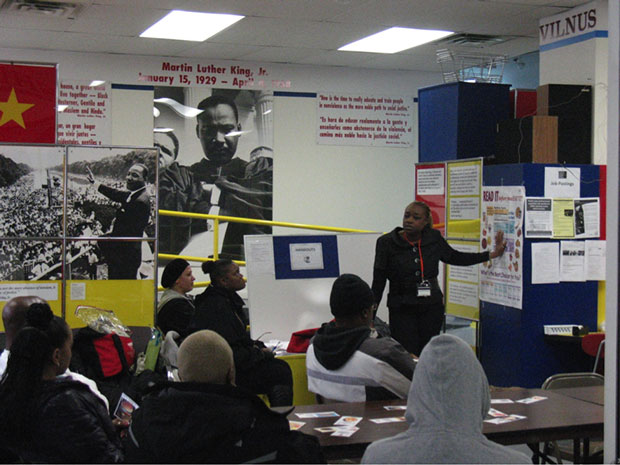1. The Cultural Significance of Fashion Trends
Fashion trends often originate on high-profile runways, showcasing avant-garde designs that may seem distant from everyday wear. However, their cultural significance becomes evident as these trends ripple through society, influencing mainstream cultural expressions. For instance, the rebellious punk aesthetics of the 1970s, initially underground, found their way into popular music, art, and street fashion, exemplifying how high fashion can serve as a catalyst for cultural shifts.
Celebrity and influencer culture plays a pivotal role in this dynamic. When a celebrity dons a particular style or accessory, it often sparks a trend that penetrates various social strata. The rise of social media platforms like Instagram has democratized trend-setting, allowing influencers to shape daily fashion choices, making high fashion’s impact more immediate and widespread. A notable example is the adoption of athleisure, which evolved from sportswear showcased on runways to a staple of casual wear worldwide, driven largely by influencers and celebrity endorsements.
Case Studies of Iconic Trends
- Minimalism in the 1990s: The sleek, understated styles promoted by designers like Calvin Klein became symbols of a cultural shift towards simplicity and functionality.
- Streetwear’s Mainstream Rise: Originally rooted in urban youth cultures, brands like Supreme and Off-White transitioned from niche to luxury, influencing global fashion narratives.
- Color Blocking and Neon: The vibrant palettes of the 1980s have periodically resurged, reflecting societal moods and technological optimism.
These examples illustrate the fluid boundary between high fashion and everyday culture, emphasizing how runway trends serve as a foundation for broader cultural movements.
2. The Intersection of Fashion and Identity in Contemporary Society
Fashion has become a powerful tool for expressing personal and social identities. From gender-neutral collections to cultural-specific garments, clothing choices communicate values, beliefs, and affiliations. The rise of inclusive fashion brands like Chromat or Phluid Project exemplifies this shift, as they promote diversity and challenge traditional gender norms.
Globalization and cultural exchange have enriched fashion narratives, allowing traditional garments such as the kimono or dashiki to influence mainstream styles. Yet, this blending raises questions about cultural appropriation versus appreciation. Respectful incorporation of cultural elements fosters mutual understanding and preserves the significance of traditional attire, transforming fashion into a dialogue rather than a monologue.
Moreover, fashion serves as a platform for activism. The pink ribbons of breast cancer awareness, LGBTQ+ pride colors, and protest apparel like safety pins or suffragette sashes exemplify clothing’s role in societal movements. These sartorial choices amplify messages, foster solidarity, and catalyze change.
3. Subcultures and Niche Movements: From Marginal to Mainstream
Many fashion styles that began in marginalized communities have transitioned into mainstream culture. For example, punk fashion—characterized by ripped clothing, safety pins, and bold hairstyles—originated as a form of rebellion among youth in the 1970s. Over time, elements of punk became incorporated into popular fashion, influencing designers and retail brands worldwide.
Similarly, subcultural aesthetics like goth, skate, or rave styles have traveled from underground scenes to high-street stores. This process often involves adaptation and commercialization, which can raise cultural concerns about authenticity and respectfulness. However, it also signifies how niche movements impact mainstream fashion, encouraging diversity and innovation.
The cultural implications are profound—adopting subcultural aesthetics can foster a sense of community and identity, but it also necessitates sensitivity to the origins and meanings of these styles.
4. The Role of Technology and Media in Shaping Fashion’s Cultural Impact
Social media platforms like TikTok, Instagram, and Pinterest have revolutionized how trends spread, making fashion more democratic and accessible. Quick viral challenges, such as the rise of the ‘cottagecore’ aesthetic or ‘VSCO girl’ style, showcase how digital media accelerates cultural shifts in fashion.
Virtual fashion and digital runways are emerging as innovative frontiers. Brands like Balenciaga and Gucci have showcased digital-only collections, blending technology with artistic expression. These developments not only expand creative possibilities but also foster new cultural dialogues around digital identity and sustainability.
Fast fashion, driven by rapid trend turnover, has significant cultural consequences. It democratizes access but often raises ethical concerns regarding environmental impact and labor practices. Understanding this complex landscape is vital for consumers and designers alike.
5. Sustainability and Ethical Fashion: Cultural Shifts Toward Responsibility
Environmental concerns have spurred a cultural shift toward sustainability in fashion. Movements advocating for slow fashion emphasize quality over quantity, artisanal craftsmanship, and ethical sourcing. Brands like Stella McCartney lead in eco-friendly innovation, illustrating how sustainability can be integrated into high fashion.
Culturally, slow fashion reflects a desire to reconnect with tradition and craftsmanship, countering the disposability promoted by fast fashion. This shift fosters appreciation for local artisans and sustainable materials, fostering a more responsible fashion ecosystem.
Consumer consciousness significantly influences trends—demand for transparency and ethical practices is transforming industry standards, encouraging brands to adopt more sustainable and ethical approaches.
6. The Evolution of Fashion’s Cultural Roles in Different Societies
Western fashion, often characterized by fast-paced trends and mass production, contrasts with non-Western approaches that emphasize tradition, craftsmanship, and cultural symbolism. For example, traditional African textiles like kente or batik fabrics are increasingly integrated into contemporary fashion, bridging cultural heritage and modern aesthetics.
Modern fashion often involves the adaptation of traditional garments—such as the kimono-inspired dresses or sari-inspired evening wear—highlighting respect for cultural roots while innovating stylistically.
Navigating respectful cultural exchange is crucial—understanding the difference between appreciation and appropriation can foster more meaningful and respectful cross-cultural collaborations in fashion.
7. Fashion as a Reflection and Catalyst of Cultural Change
Throughout history, fashion has mirrored societal shifts—from the flapper dresses of the 1920s symbolizing women’s liberation to the activism-inspired T-shirts of today. Clothing choices often manifest collective values and aspirations, serving as a visible form of cultural dialogue.
Fashion also has the power to inspire social change by promoting inclusivity and diversity. Campaigns featuring models of different sizes, races, and genders challenge narrow beauty standards and foster broader acceptance.
Looking ahead, emerging themes such as digital identity, environmental sustainability, and cultural dialogue will likely shape future fashion developments, continuing its role as a catalyst for cultural evolution.
8. Connecting Back to Color and Style Evolution: From Runways to Cultural Movements
Building on the insights from How Color and Style Evolved in Modern Fashion, it is evident that cultural values profoundly influence color choices and stylistic expressions in mainstream fashion. For instance, the rise of eco-consciousness has popularized earth tones and natural dyes, reflecting a cultural shift toward sustainability.
Moreover, fashion cycles are often intertwined with cultural reinterpretations. The revival of 1970s psychedelic prints or 1990s grunge aesthetics exemplifies how trends are revisited and reshaped through contemporary lenses, driven by societal moods and technological advancements.
This ongoing dialogue between high fashion innovations and everyday cultural adaptation underscores fashion’s role as both a mirror and a catalyst of societal change. As cultural themes evolve—whether emphasizing diversity, sustainability, or digital identity—so too do the colors and styles that define our collective aesthetic.


